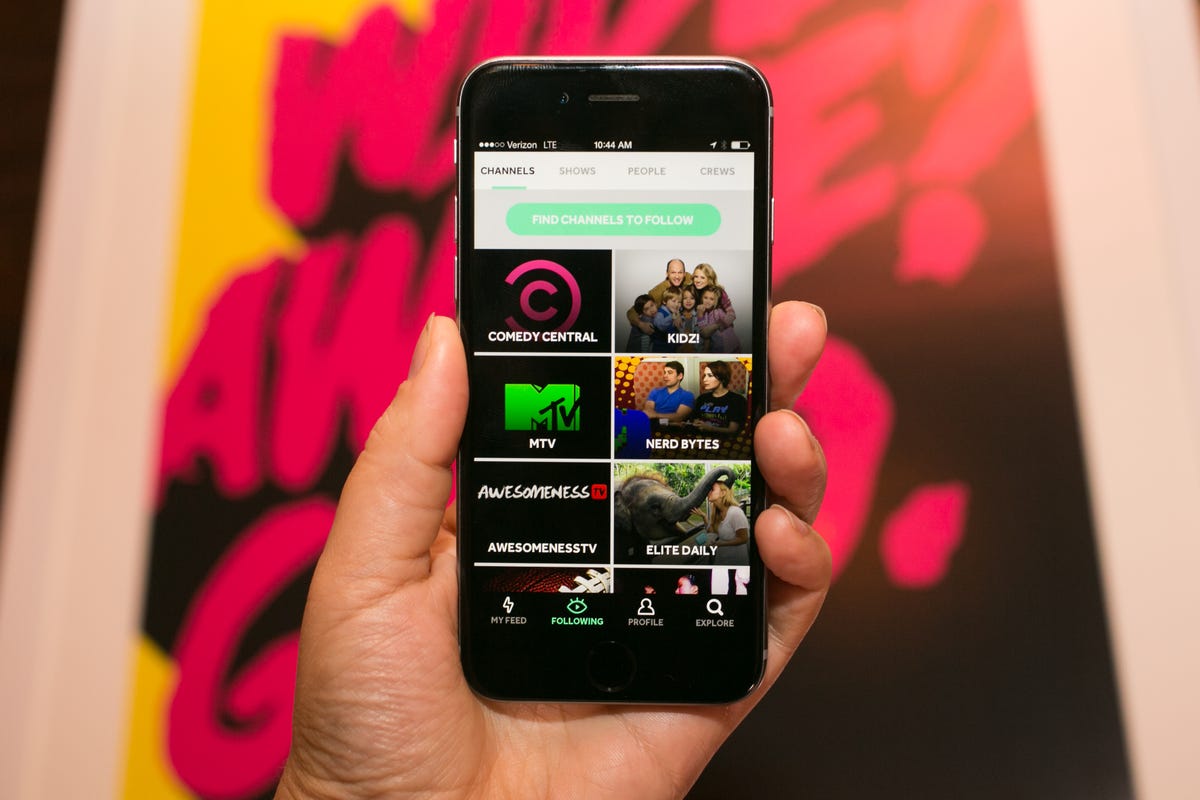
CTIA
LAS VEGAS — Verizon is treading into new territory with its Go90 mobile video service.
Go90, unveiled last week, is a departure for the New York telecommunications giant in several ways. The service is free and supported by advertisements, rather than requiring a subscription. It’s available to anyone, not just Verizon customers, and Go90 won’t carry the Verizon logo.
Verizon’s willingness to embrace a more open approach speaks to the underlying shifts in the mobile industry, in which smaller players such as T-Mobile and Sprint are starting to eat away at Verizon’s core business. That insurgency is driving the nation’s largest wireless carrier to look at different areas for growth and new business models, which means unique services such as Go90.
Verizon sent out 5 million invitations to its customers to give Go90 a try and plans a wider public launch later this month. The service will offer a mix of TV shows, sports and shorter videos found on sites like YouTube.
Unlike other so-called over-the top video services such as Netflix that can be viewed on anything from a smartphone to a PC to a Net-connected set-top box, Go90 is aimed only at mobile gear such as phones and tablets. The plan for Go90 didn’t start out that way, though.
Marni Walden, president of Verizon’s product innovation and new businesses unit, sat down with CNET at the CTIA Wireless trade show here last week to share some insights on Go90.
A completely different product
Go90 evolved from OnCue, an online video service developed at Intel. When Intel sought to refocus on its core chip business, it unloaded the business to Verizon in January 2014.
OnCue was meant to replace traditional television service, with bundles of online channels you could pay for in the range of $60 to $100. Verizon scrapped the idea after taking over.
“When you looked at business model, it was just really hard to see how you were going to make that work,” Walden said.


Sarah Tew/CNET
The OnCue team was initially resistant to going purely mobile because it represented such a radically different direction. But focus-group tests among customers showed the appeal of the service, and the idea of a mobile-only service was set by that summer.
Still, Go90 arrives as other services are able to run across multiple devices, from smartphones to streaming set-top boxes to computer browsers.
“Everybody else is doing all these other things,” she said. “So we very much want to differentiate what our product was going to be about.”
Verizon was highly dependent on focus groups to craft the direction of Go90. The company incorporated ways to share video to cater to the social habits of its target audience: people known as millennials, who are typically under the age of 30.
“We would watch people consume content, and the very next thing they wanted to do was to have somebody sitting next to them watch it as well,” Walden said. “We didn’t know how big that was going to be in building the product.”
Opening Go90 up
When the company made the switch from a subscription model — its bread-and-butter moneymaker — to an advertisement-based business, the company knew it had to open the service up.
“In order to drive that business model, you need as many eyeballs on the product as you can,” Walden said.
Some content will be exclusive to Verizon. Its broadcast of NFL games will be available only to Verizon customers, for example, because of the licensing agreement struck between the National Football League and the carrier.
For a company known for slapping its brand on everything — smartphones, billboards, trucks — it was surprising that the company resisted throwing the Verizon name, or even the color red, on the app. When the company advertises Go90, the commercials won’t feature Verizon.
Verizon’s acquisition of AOL in June has helped shape plans by giving Verizon the ad technology critical to powering the service.
Beyond simple advertisements, Walden said, the company plans to roll out sponsored videos that won’t eat into your mobile data cap — a critical consideration in an age when data is limited and customers can be hit with charges for watching too many mobile videos.
Walden hinted at more creative ways to deliver short mobile-video ads.
Not mobile-only forever?
Go90 is mobile-only for now, but that may not always be the case.
Verizon is considering a companion product for the home or other screens, including the browser or a set-top streaming box like Roku’s, for some unspecified later date, Walden said. That will largely depend on demand from its viewers.
“The idea of being able to go across all screens at some point will be something we’ll continue to evaluate,” she said.
For now, Walden is focused on ensuring Go90 has a successful launch.
“We will only do that,” she said, “when we get this first product nailed.”



